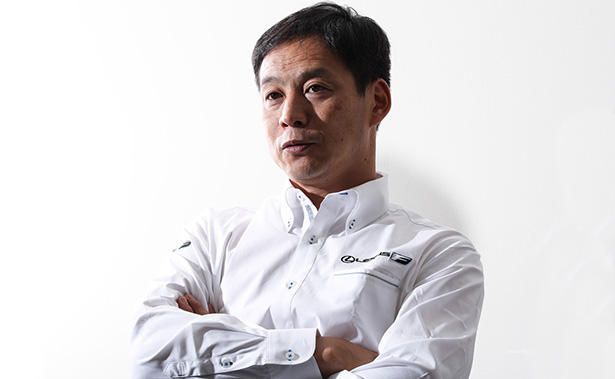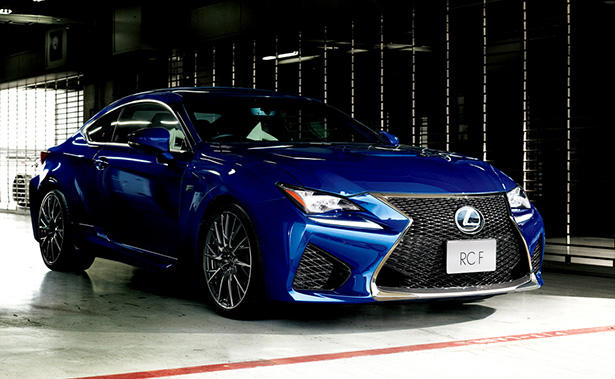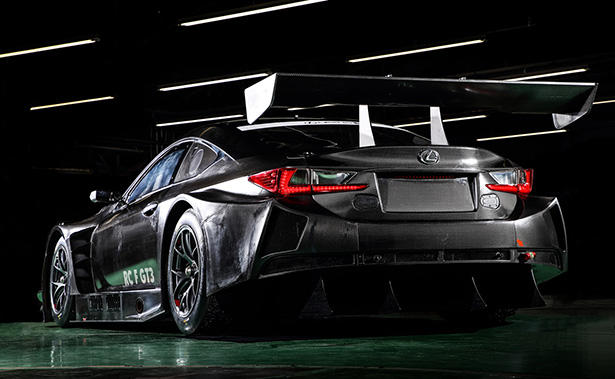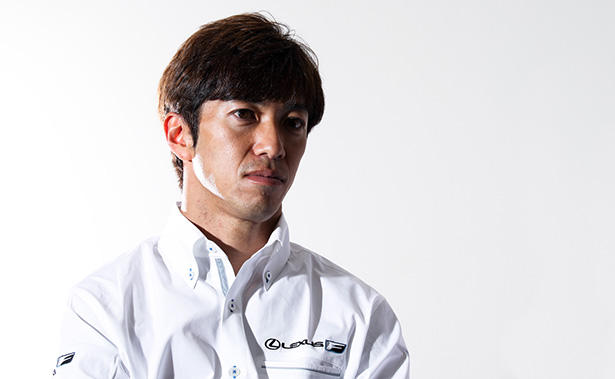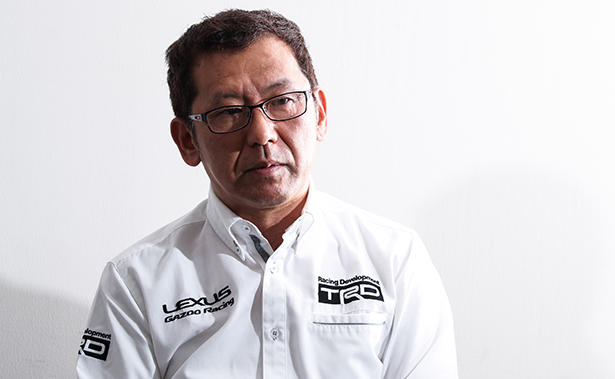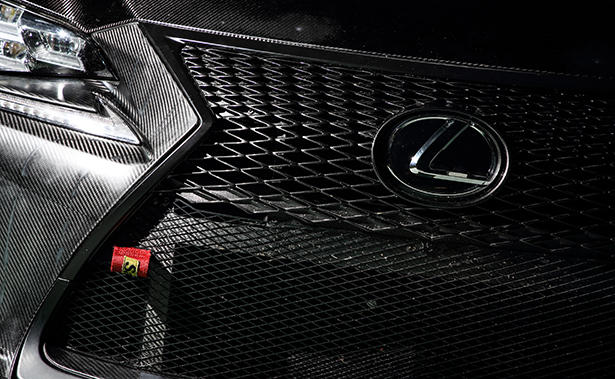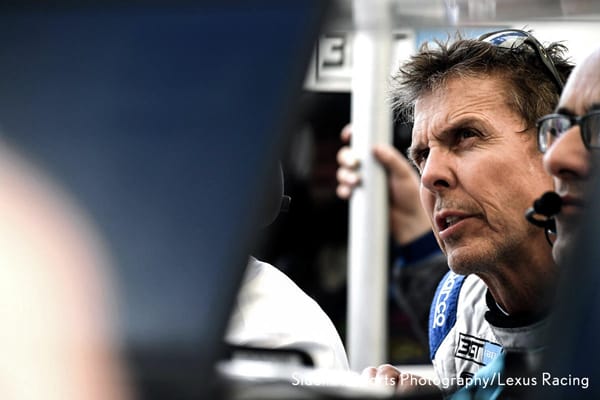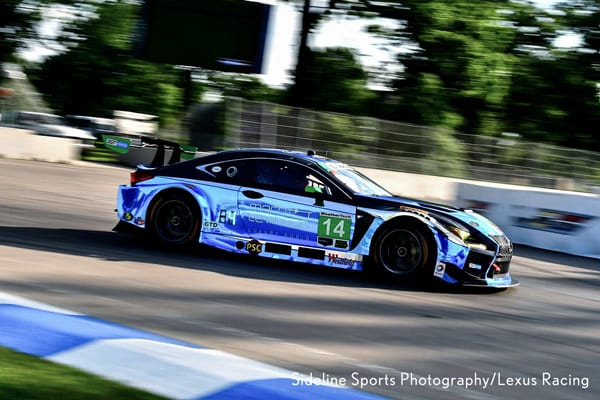For a luxury brand such as Lexus to compete in the GT500 class of the SUPER GT, among the most competitive in the motorsport world, is something many people would expect.
On the other hand, what would be its motives behind the production of a for-customer, FIA GT3 regulation racing car?
And what sort of a developmental process would be adopted?
The following is a breakdown of the central features of the RC F GT3 project, including an analysis of the leap to stellar success of this year's model compared to the modesty of its 2015 counterpart.
-- Presently in motorsports, GT races, and specifically races for FIA GT3 regulation vehicles, are on the rise around the globe. Car manufacturers, for their part, are working hard to supply the market with FIA GT3 with unique characters. To such a backdrop, what were the motives of a luxury brand such as Lexus to produce an FIA GT3 machine?
Keizo Takahashi: We believe first and foremost, that for Lexus to participate in motor sports is a must from the perspective of boosting the image of our cars' performance. Equally true is the fact that up until this point Lexus possessed no high-performance, two-door coupe fit for competition in motorsports before the arrival of the RC F.
-- Coinciding with this arrival of the RC F, the RC F was adopted as the GT500 class competition model in the SUPER GT. Was the plan to develop a FIA GT3 machine already in place, at that time?
Takahashi: At the time, most luxury car brands in the world were producing FIA GT3 machines. We at Lexus had felt it would be good to have an attractive FIA GT3 model for its customers to enter races themselves with in competitions the world over. As a consequence, we began an RC F GT3 project as soon as the development of the high-performance, production model RC F coupe was underway.
In order to promote the image of Lexus as an emotional brand, motorsports came across as the ideal setting and, taking a global view of motorsports, we believe the necessity of producing results in the FIA GT3 category to be essential.
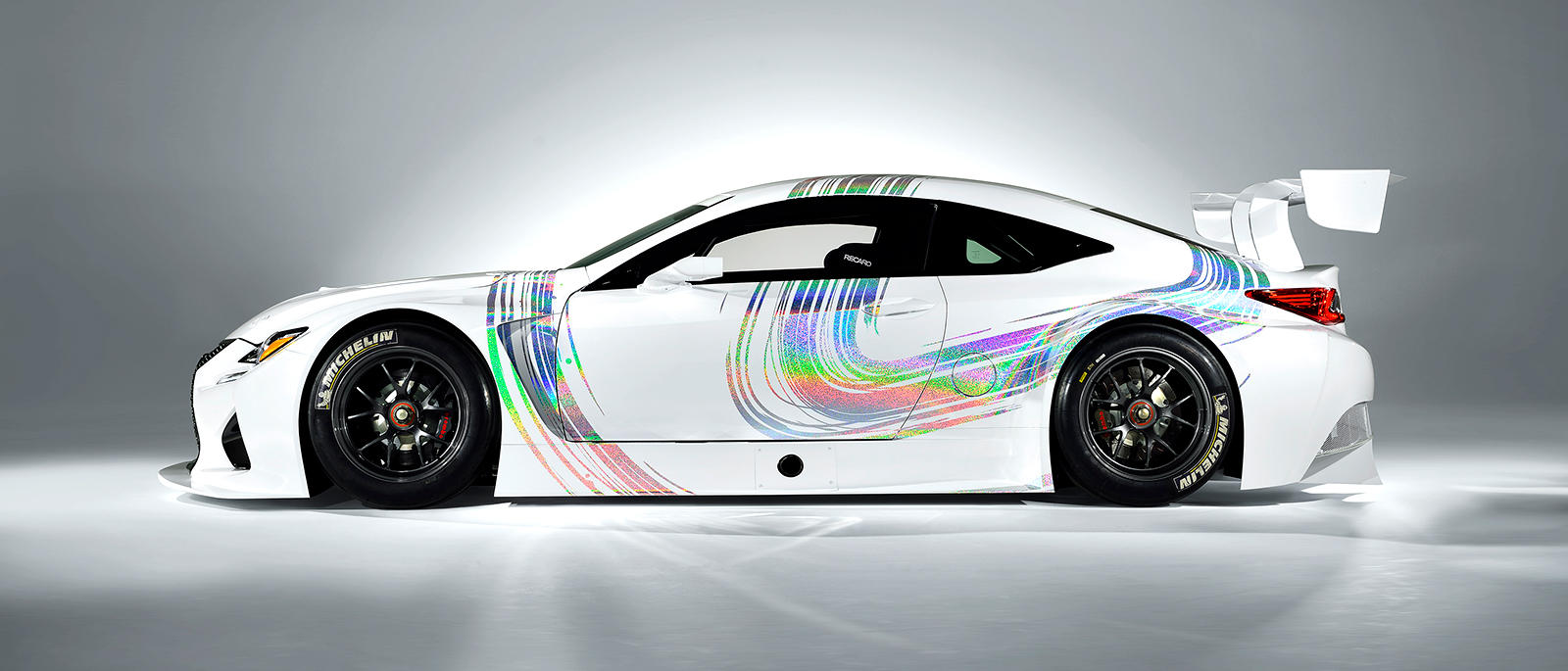
-- This would imply that the RC F GT3 project commenced very early on. As the developmental driver, does this mean that you were involved with it from the start?
Akira Iida: Yes, the RC F GT3 project had begun concurrently with the development of the production model RC F. But we soon realized that the challenge of creating a production model-based racecar came with a unique set of difficulties. Foremost of these was nothing other than the fact that our production target, its "rival," was an FIA GT3 machine from 2011-2012 ....
Takahashi: The RC F GT3 was first formally entered in the SUPER GT's GT300 class in 2015, and the level of competition over the course of the previous couple of years had increased far beyond what we had anticipated. So, the unfortunate truth was that the level of performance the 2015 RC F GT3 model did not measure up to what was required of an FIA GT3 regulation machine at that time.
Iida: The FIA GT3 regulation scheme adopts a "performance window," where the output of the engine, vehicle weight and aerodynamics must all fall within a specified range. As a consequence of these standards undergoing a large revision upwards in 2015, the performance targets that we had set in production became insufficient.
Takahashi: Therefore, during development of the 2017 RC F GT3, a large overhaul in our developmental concept was needed to reach a new set of performance objectives. It was under these conditions that the TRD (Toyota Racing Development) team began working on development, led by Mr. Yuasa.
Kazumoto Yuasa: We began working on development of the 2017 RC F GT3 model in 2015. To build a racing car virtually from scratch, as opposed to improving on an existing one, and for it to be based on a production model, all meant that we would have to complete its development according to a very unforgiving timeline. We consequently buttressed our developmental capacity, and in addition, we asked Tachikawa-san on board as development driver for the 2017 model. Through our long history of working in racecar production with both Iida-san and Tachikawa-san, we had every faith in them as our drivers. Improving performance in the limited time frame that we had meant that we needed faster, more accurate feedback, and we found that the cooperation of these two was imperative.
-- Was there a difference in the roles you played as development drivers?
Iida: Nothing concrete. Having been involved in the development of the production model, however, it was always in the back of my mind that, as a racecar available to the public in customer motorsports, it would be amateurs getting behind the wheel of the RC F GT3, andthat is the area I concentrated on. In contrast, I believed that Tachikawa-san, as a GT500 competition athlete, largely be providing input concerning performance.
Yuji Tachikawa:I belief that, above all, performance is the goal. But this being said, I also understand that we cannot have a "peaky" vehicle, which can only be handled by a professional driver. So, a machine that is fast but also easy to handle is what I maintained as the goal throughout the development process.
Iida:"Ease of use" in a car might be described as the abundance of information it provides the driver with, and the ease with which it handles. And bearing in mind that it will be used by amateur drivers, another point we give particular attention to in development is visibility, and field of view.
-- And thus the 2017 model RC F GT3 was created, with performance that measured up to its rivaling machines. In your opinion, what comparison would you draw between the RC F GT3 and the production model RC F?
Tachikawa: The large-displacement V8 engine of the RC F GT3 delivers strong torque from the low rpm range, while also providing a linear and easy-to-drive feeling. And I think that this feeling is something it has in common with the production model RC F.
Iida: I would agree that the sound coming from the RC F GT3's muffler is similar to that produced by the RC F's V8 engine--both give the sense that one is, vityually, driving an RC F. And from that, I think one can extrapolate that the RC F GT3 does in fact lie on the same trajectory as other Lexus vehicles in terms of the development philosophy; a fulfillment of the same vision for car manufacturing.
Yuasa: Practically speaking, the RC F GT3 does in fact share many of the engine parts of the production model, beginning with the cylinder block. However, owing to the need for a large increase in performance, changes have also been made, such as adopting the 8-throttle-body intake system.
Iida: While it's true, the RC F GT3 is a racecar, that doesn't mean it is completely different from the production model. So, I think those who enjoy driving the RC F on race circuits will realize that the RC F GT3 is has been developed in line with same concepts as the production model.
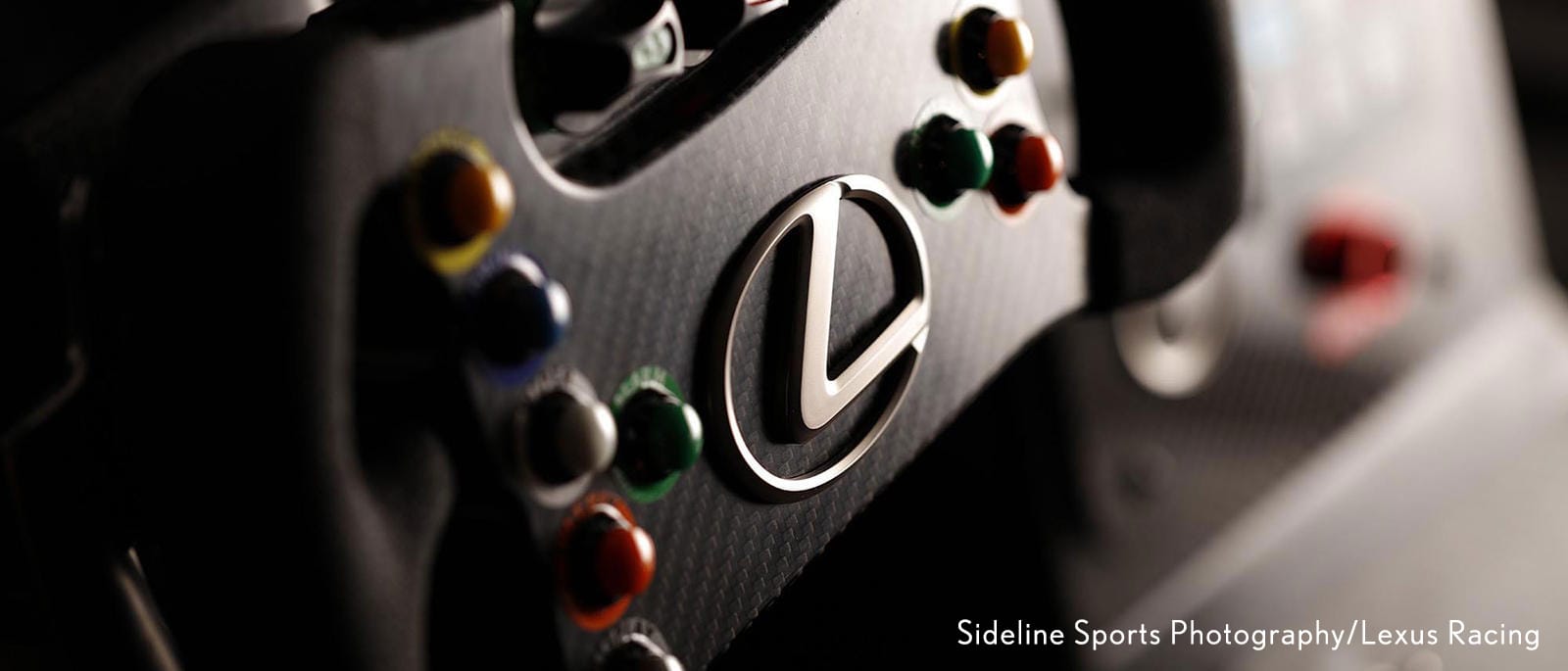
-- I understand that the minimum weight for the RC F GT3 is 1,300 kg. This makes for a reduction in weight from the production model of 500 kg. How was this achieved?
Yuasa: The process began as one would with constructing any racecar, by removing features-for-comfort, like the airbags and rear seats, etc., all unnecessary for racing. Following this, measures such as replacing parts of the RC F GT3's body with carbon parts enabled us to achieve a reduction of around 400 kg with relative ease. By contrast, it was a tremendous challenge to drop the last 100 kg of weight. With the mindset of adopting simplicity of structure, we took a new look at the machine as a whole, which led to such changes as adopting a new type of rear suspension.
Takahashi: We were confronted with a dilemma of, on the one hand, trying to stay true to the original production model, and on the other, to produce a winning machine, and achieving both these aims turned out to be a challenge. In the process we would encounter things that, ultimately, we could not compromise on as a Lexus brand vehicle, even in a racing car. The "spindle grille" is such an example: it being a Lexus, even as a racecar, this was non-negotiable.
-- FIA GT3 vehicles are entered in races the world over. As a result, it would follow that the diverse conditions that one finds there will inform developmental decisions. Does it go without saying that you anticipated the same expectations of reliability would be brought to the racecar as what people have come to expect of all Lexus brand cars?
Iida: Since it is a Lexus racing car, it is important that it be both reliable and tough. That is something we were very aware of form the development stage.
Yuasa: In designing racecars, a basic assumption is that it is a professional driver that will be getting behind the wheel, a consequence of which is that one does not account for the possibility of the car ever running off the track. However, in the case of FIA GT3 vehicles, where amateurs also take the wheel, allowances for damage in such instances are made, resulting in adoption of stronger parts in the unsprung components, etc. Because the RC F GT3 is the Lexus FIA GT3 car, we made sure it has been designed with reliability worthy of the Lexus brand.
Tachikawa: When building a customer racing car such as a FIA GT3 car, it is not enough for the car simply to be fast, it also has to be a strong car. As a consequence, the potential of the production car serving as the base machine becomes important.
Iida: We realize that has been our experience that taking on the development of a car such as the RC F GT3 with care means we can't ignore that "good car development" as it is defined by Lexus. Also, persistency is another key ingredient. We will next undertake the GT3 model change in 2020, on account of the relevant regulation changes, but we have already put that process into motion.
Takahashi: Also, continuing development of the RC F GT3 in this way is sure to benefit the performance of the Lexus production models positively. We are grateful for all the support we receive for our work. We were fortunate enough to win a GT300 class victory at Round 2 of the SUPER GT series at Fuji in May. We will stay committed to delivering such competition results with the RC F GT3, and we hope that everyone will also look forward to improved performance in the Lexus production models as well.
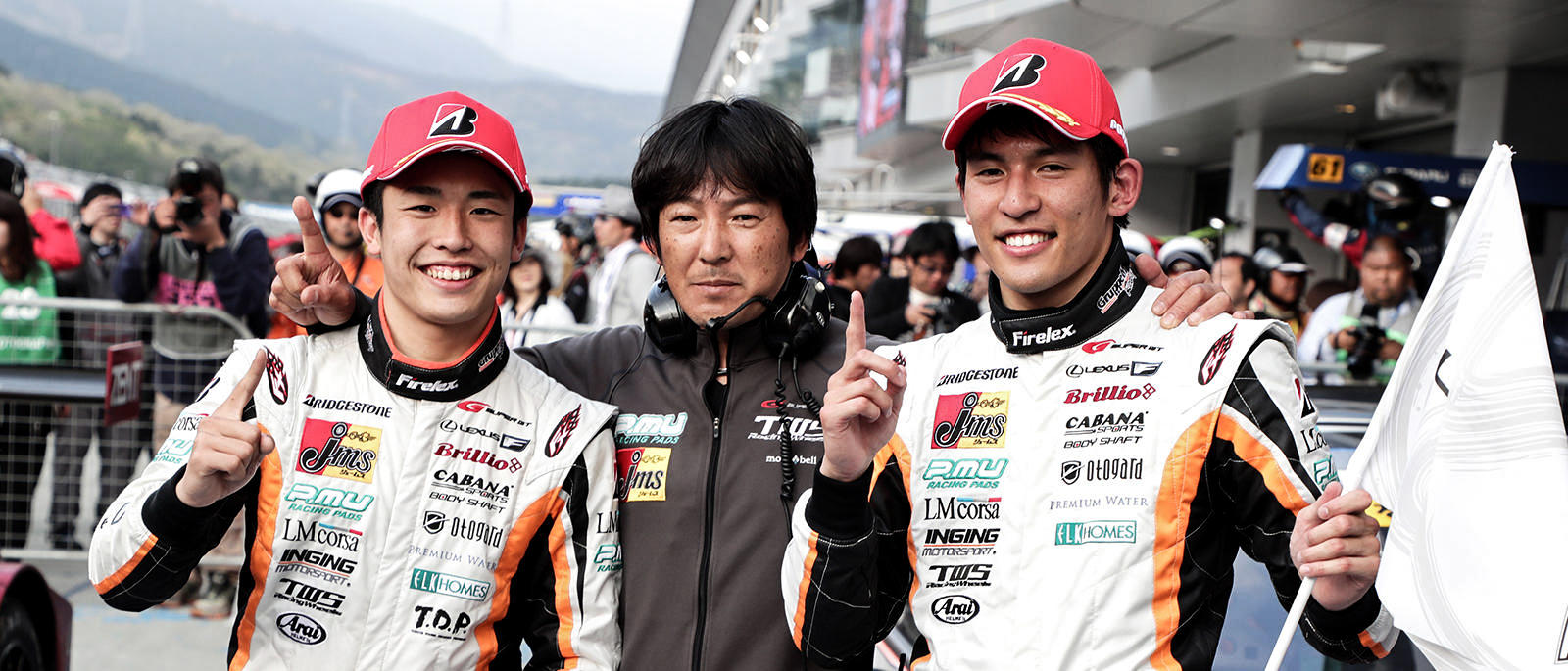
Competing in the 2017 season were two Lexus RC F GT3s in the GT300 class of SUPER GT in Japan, and two in the GTD class of the IMSA-organized WeatherTech MotorSports Championship, held in the USA. We received comments from two accomplished drivers that compete in these series about their exploits. Below is an interview with the driver of the No. 14 car of 3GT Racing, Scott Pruett, who competes in the IMSA series. So far this season the No. 14 car has consistently finished in the top-10. Their fellow RC F GT3 counterparts competing in the No. 15 car have recorded a fastest lap in Round 6 to finish in 5th place, the best this season, as Pruett's own No. 14 finished 6th.
-- How was your first experience of driving the LEXUS RC F GT3 (this season's model)?
Scott Pruett: It was overwhelming! I was excited to drive the new RC F GT3 at Fuji Speedway, and then there was the excitement of being able to participate in making Lexus history through the competition in the U.S. with this vehicle, as well.
-- In the races, what strengths do you think the RC F GT3 has?
Pruett: The speed with which it can take high-speed turns. I believe that the RC F GT3 is among the fastest in these turns on virtually any circuit.
-- How would you reflect on the races you have competed in, thus far?
Pruett:It is still a learning experience for me. Competition is stiff in the IMSA series, as we have to compete with long-standing top teams are already vying for the Championship. In this context, we're still newcomers. There really is a lot to learn.
-- How do you feel about the RC F GT3?
Pruett: The RC F GT3 is still in an evolutionary stage and, as this process continues to unfold, my confidence has likewise grown. I'm excited for the upcoming races.
-- What do you hope to achieve this season?
Pruett: We are definitely going to get a victory with this RC F GT3!
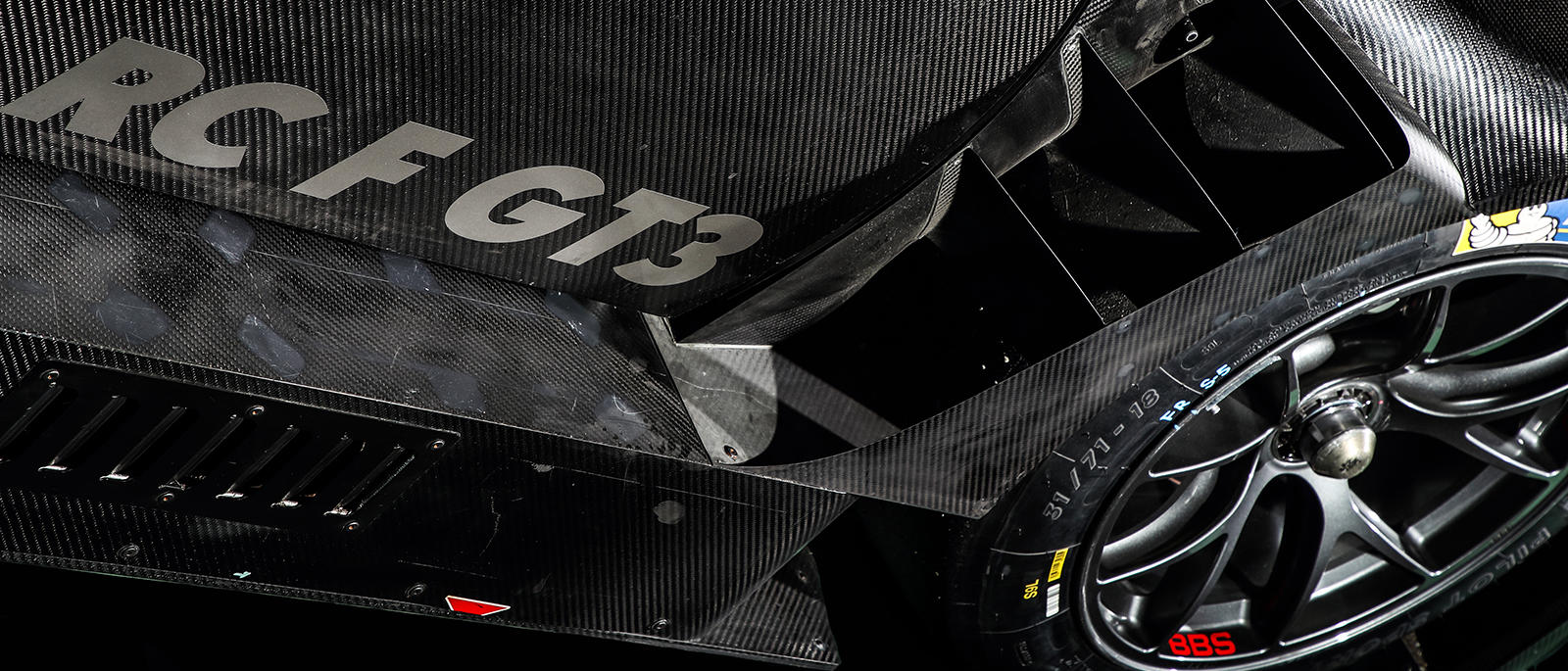
Clearly, constructing a machine that measures up to the FIA GT3 cars that precede it, while staying true to the Lexus philosophy has been a tremendous task for the people working on the development of the LEXUS RC F GT3. For the ensuing second half of this report, we explore the development process for the 2017 model LEXUS RC F GT3and the future direction and possibilities of the project.


